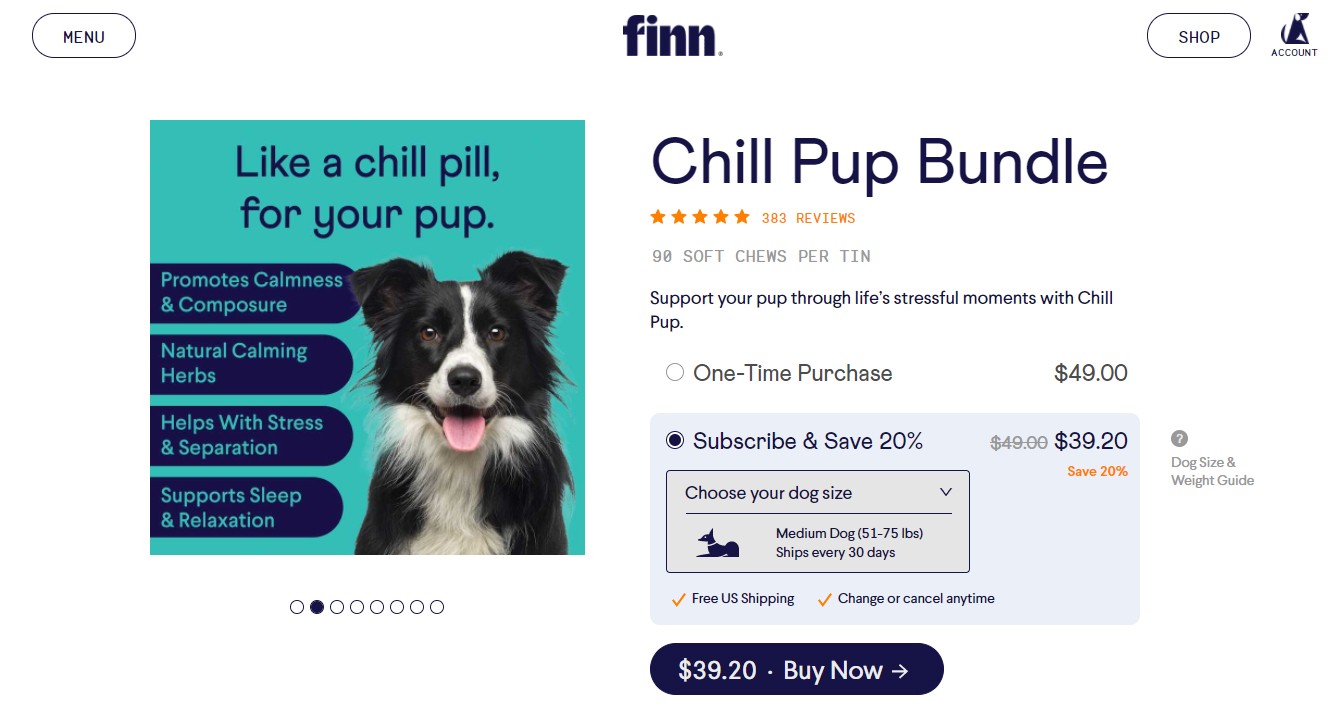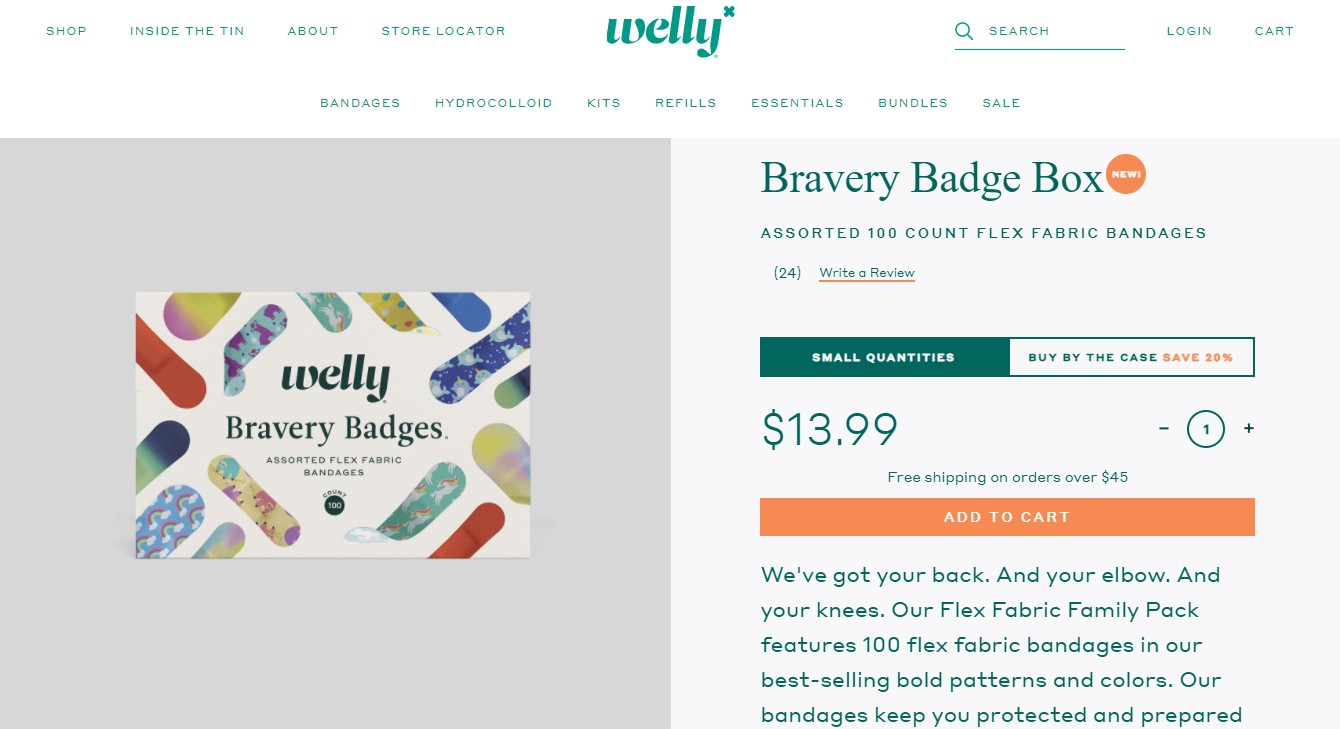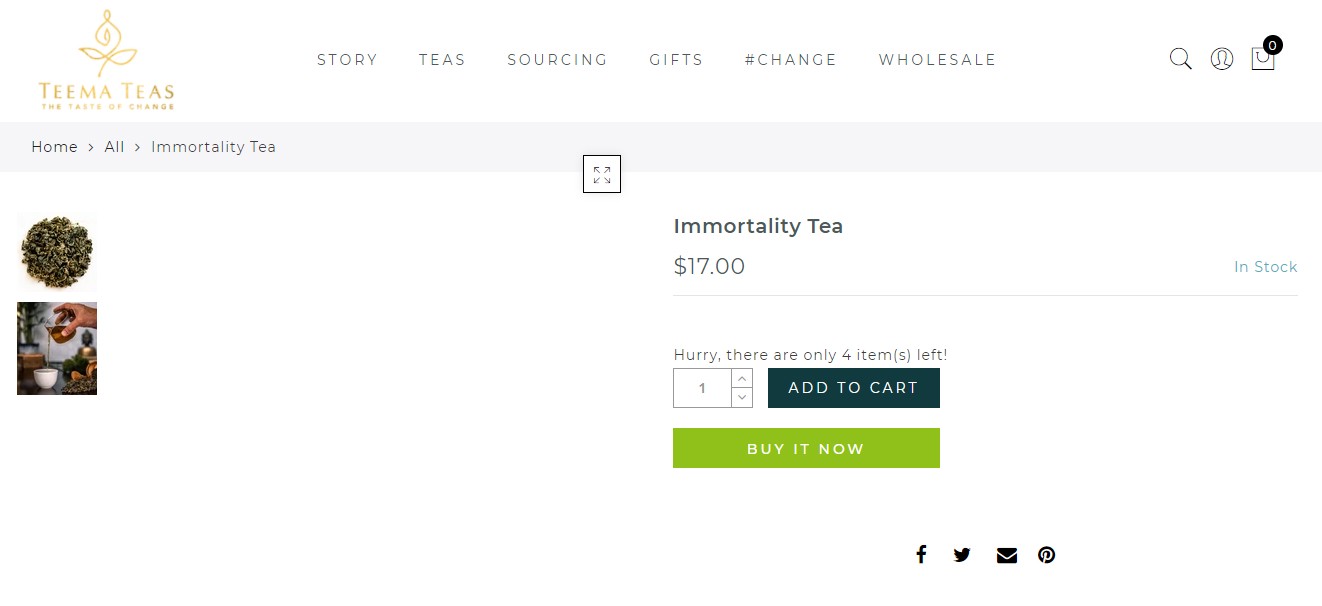Regardless of the type of products you sell and the size of your online store, having persuasive product descriptions will always make a difference in how your business performs. The quality of your product descriptions also directly affects your conversion rate.
Did you know that about 87% of shoppers read product descriptions before deciding if they will buy a product or not? So, it’s smart to learn how to write effective product descriptions.
Effective product descriptions can attract customers and influence their decision to complete a purchase. Ultimately, they increase your visibility and lead to an increase in sales.
This is why mastering the art of writing persuasive product descriptions is important to succeed with eCommerce.
In this guide, you will learn everything you need to know about writing persuasive product descriptions. Plus, we will be sharing some examples of good product descriptions you can draw inspiration from.
Let’s jump right in!
What is a Product Description?
A product description is a copy that explains what your product is to a customer, and why they should buy it.
In addition to that, it helps to convince potential customers to buy your products even if they never intended to.
Product descriptions come in different styles depending on the writer, essay helper, and/or the product it talks about. They can be short and scannable or long and engaging. You could give them a serious or a funny tone. They can be placed anywhere on the product page, beside the product title and images, or underneath them.
What Makes for a Good Product Description?
Good product descriptions help casual buyers make the decision to buy your product by moving them down your sales funnel and improving your conversion. Bad product descriptions, on the other hand, can turn away potential customers from purchasing your product.
The difference between a good and a bad product description has very little to do with its length, tone, or verbiage. Although these elements are important, there is more to the product description.
A good product description must answer these questions:
- What problem does your product solve?
- What benefits will the customer enjoy from using your product?
- How is your product better than your competitors?
Reasons Why Writing Good Product Descriptions Are Important
Writing good Shopify product descriptions is easily one of the most important ways to move more casual shoppers further down your sales funnel, achieve better conversion rates, and improve your sales and revenue.
1. Helps to Inform and Educate Visitors about Your Product
Good product descriptions help to inform and educate your customer on a particular product you are selling. Product descriptions have the general purpose of describing a product to the customer. But a good product description helps your customers make better buying decisions.
This leads us to the second reason why good product descriptions are important.
2. Builds Trust
Good product descriptions help to build trust between your customers and your brand.
Customers are more likely to trust your store because they can get all the necessary information they need about your product without having to make extra inquiries. For example, if you sell gadgets or clothing items, your customers may want to know the specification and features of these products and why they should spend their money buying them.
Getting all of this information right away enhances their experience and builds a connection between you and them. It gives them the assurance that your product solves a problem they have and that it is exactly what they are looking for. This means they are likely to become return customers.
On the other hand, if they do not get a product description that does this, they are likely to just move on to the next store.
3. Differentiation from Competition
Good product descriptions help you stand out from the rest of the competition. Having good and persuasive product descriptions for all your products might be the only edge you need over the competition.
4. Increases Visibility
A good product description increases your visibility. An effective and persuasive product description improves your store’s SEO. As more customers show trust in your brand because of your content, your brand is more likely to rank higher on search engines like Google, directly increasing the traffic that comes to your site.
How to Write Product Descriptions
Writing persuasive product descriptions is not a walk in the park, especially if you’re not a copywriter.
Here are tips to follow to write a good one:
1. Define Who Your Ideal Customer Is and Focus on Them
When writing a product description, it is very important to know who you are writing for. You must have an ideal customer – a target audience – in mind. If you don’t, your descriptions might come off as generic.
The first thing to do is to define your ideal customer. What are their characteristics? What do they think? Have you figured out the questions they might want to ask? What interests them? Do they appreciate humor? What words do they use or don’t use? How would you talk to them if you met them in person?
You have to put yourself in your ideal customer’s shoes when writing a product description. Write in a conversational manner, as if you were describing your product to them in person. You want to build a bond that fosters deep trust with them. So, don’t write like you are addressing a robot or a hall filled with a crowd. Write like you are talking to another human being.
Take a look at this product description from an online pet supplement store, Finn. The description of its Chill Pup Bundle is a perfect example.


“Support your pup through life’s stressful moments with Chill Pup.
From storms to separation anxiety, Calming Aid harnesses natural herbs like organic chamomile and valerian root to help your pup relax. Our daily Multivitamin with living probiotics nourishes a healthy gut, strong joints, and a luscious coat.”
From the first line of this product description, you can identify who the ideal customer of the product is – a dog owner – especially those with dogs battling anxiety. The rest of the product description goes on to list the benefits the product provides.
This leads us to the next point.
2. Motivate Your Readers with Benefits
As a seller, it is easy to focus on the individual features and specifications of your products and get excited at any opportunity to talk about them. But it is not always the same on the other side of the coin with buyers.
Most buyers are not necessarily drawn to the mundane qualities and specifications of your product. They are more interested in how they can benefit from using that product. They want to know how your product caters to their specific needs. Your customers care more about what they can achieve using your product than the product itself.
To write a good product description, you must be able to highlight the benefits that your product provides instead of focusing on just the specifications and features.
Consider Welly, an eCommerce store that sells premium bandages. The product description captures the benefits buyers get to enjoy from using their product.
“We’ve got your back. And your elbow. And your knees. Our Flex Fabric Family Pack features 100 flex fabric bandages in our best-selling bold patterns and colors. Our bandages keep you protected and prepared for anything that comes your way. The bandage seals on all four sides to keep out germs and dirt. Our innovative carton features separate compartments so you can find what you need when you need it. When you’re ready for anything, everything is possible.”


They go on to list the features and specifications of the bandages. This way, they have motivated potential buyers by focusing on what’s in it for them. So instead of just going on and on about the features and specifications, they motivate the buyer with benefits and include the specifications as supporting material.
3. Focus on Your Brand Voice and Tone
Now that you know who you are talking to and what you want to say to them, the next thing is to figure out how you want to speak to them. Are you talking to them like you are at a board meeting or like you are hanging out with them at the park?
There are different ways you could talk to your customers in person. Similarly, there are different ways to communicate your product description to your customers. The most important thing is that you understand how to persuade your ideal customer using your brand voice and tone.
What’s the difference between your brand voice and tone? Just like your voice is always the same but your tone changes from time to time, your brand voice is the same while your brand tone changes from time to time, or from product to product.
Your tone could be humorous and edgy, reserved and refined, or even warm and friendly. What matters most is that it persuades your ideal customer and it maintains the brand impression you want to portray.
4. Conjure Your Customers’ Imagination
As human beings, the desire to own a product drastically increases when we hold it. This is because we can imagine owning and using that product. However, this does not translate well to eCommerce products – your customers cannot hold them.
One way to conjure your customer’s imagination is by using high-quality images and videos that showcase your product. But there are times when images alone cannot do justice to your products. This is why it is necessary to use a copywriting technique that is sure to increase their desire for your product.
In your product description, try describing the feeling your ideal customer will get when they purchase and use your product.
5. Use Storytelling
Humans are emotional beings. As such, appealing to your customers’ emotions with your description will persuade them to buy from you.
How do you achieve this? Through storytelling.
Stories play well to our emotions and break down the rational barriers we have against persuasion. It allows you to build an emotional bond with your customer instead of a transactional one.
A brand like Teema Teas uses storytelling well in writing its product descriptions. Take a look at the description of their Immortality Tea:


“Known to the local populations in China for hundreds of years, this miracle plant (Jiaogulan) became known by those who drank it as the “herb of immortality”. A powerful adaptogen, it has been traditionally used since the 16th century to benefit blood pressure, cholesterol, immunity, strength, and stamina. 100% caffeine-free, yet naturally stimulating.”
This description explains the historical background of the product and what inspired its name. This story appeals to the emotional side of their ideal customer.
When employing the technique of storytelling, there are a few questions about your products that your product description should answer:
- What is the origin of this product?
- What inspired the making of the product?
- How was the product made?
- How does the product fit into your ideal customer’s life?
6. Appeal to Your Customers with Power Words
Some words are better than others at igniting an emotional response in your customer. They are called power words and significantly improve conversions. As a seller, these words should reflect more in your Shopify product descriptions.
Using these words make your product descriptions more persuasive. Some of these words include:
- Introducing
- Announcing
- Miracle
- Revolutionary
- Stunning
- Amazing
- Sensational
- Spectacular
- Now
- Suddenly
You might also consider using sensory adjectives in your copy.
Sensory adjectives strongly influence the mind of the customer to “feel” your descriptions. These adjectives typically describe sound, taste, look, touch, and smell. Examples are cold, sweet, fragrant, tangy, fuzzy, etc.
7. Draw Your Customers in With Social Proof
As human beings, we are strongly influenced by the actions of our peers. This means that we are more likely to do something when someone else we know or trust is doing the same. This is why reviews are important in eCommerce.
Reviews help your customers make up their minds when they are undecided as to whether they should buy your product. Seeing a significant amount of genuine reviews on your product page can encourage a buyer to follow through with their purchase.
Your product reviews can be from customers who have used your products before. You can also use ratings, or even an endorsement from an industry expert, thought leader, or influencer. These will serve as social proof to enhance your store’s conversion.
Social proof can be a very powerful factor because people tend to take them quite seriously. So, be sure to include them somewhere in your product description.
8. Make it Easy to Scan
Most people have a very short attention span, and so are very unlikely to read everything on your page. Oftentimes, they just scan through, skimming your content until something catches their attention.
This is why it is important to make your description scannable. Scannable descriptions are easier to read, and, hence, more appealing.
There are a few ways to make your product page and product description easy to scan. But the two primary ways to achieve this are using catchy headlines and breaking down your text into bullet points.
An example of a brand that does this is The Oodie.


The headline “I Love Plant Oodie” is short, catchy, and immediately grabs their customer’s attention. This will definitely have them reading the easy-to-scan product description below:
“Can’t stop buying plants? Unbeleafable. Don’t worry – us too! Cover yourself in your favourite obsession in our NEW I Love Plants Oodie! For every I Love Plants Oodie sold, one tree is planted across Australia.”
9. Optimize for Search Engines
When writing your product descriptions, it’s important to keep search engines in mind, too, and not only people.
Doing so makes it easy for people to find your products on Google, hence leading to more traffic to your Shopify website.
To get started with optimizing your product description, you have to conduct some keyword research to determine the search terms customers use in searching for the kind of products you sell.
According to Shopify, you should include keywords in the following areas:
- Page titles
- Meta descriptions
- ALT tags
- Product descriptions
Including keywords in your product titles and product descriptions improves the ranking of your site on search engines.
10. Set Specific Goals and KPIs
What specific goal are you looking to achieve with your product descriptions? And how do you know when those goals have been achieved?
You have to define the metrics you will use in making that assessment. This will help you determine the effective and ineffective descriptions, and determine how to improve them.
If your product descriptions are effective, you should notice the following:
- Increased conversion rate
- Reduced cart abandonment rate
- Improved organic search rankings
You can choose to carry out A/B tests on your product descriptions. This will also help improve your conversion rate.
Conclusion
As you’ve seen, writing persuasive product descriptions can help improve your store’s performance. We hope that with all we’ve shared so far, you can now write one.
Are you having a difficult time converting visitors to your Shopify website into customers? The Adoric Shopify App can help.
Our app comes with lots of features that allow you to convert your visitors into customers, promote your sales offers to visitors, and reduce cart abandonment.
Best of all, it is easy to use.
Install Adoric on your Shopify website today and watch your sales grow.




